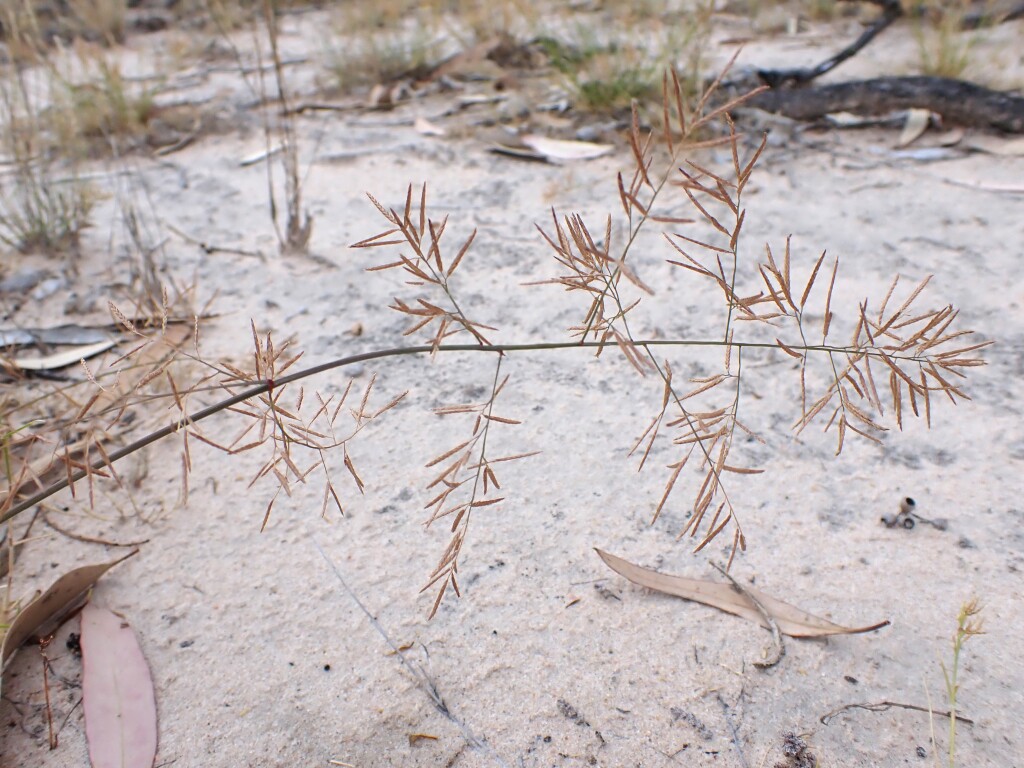Eragrostis lacunaria
F.Muell. ex Benth. Purple Love-grassSlender, tufted perennial or annual, culms erect, sometimes branched, to 60 cm high. Leaves sprinkled with fine, tubercle-based hairs, occasionally merely tuberculate or glabrous; blade closely inrolled, to 7 cm long and 1 mm wide. Inflorescence an open panicle, to 18 cm long and 10 cm wide, branches finally stiffly spreading, lower branches solitary. Spikelets 9–35-flowered, 5–20 mm long and 0.7–1.5 mm wide, commonly strongly purplish and shining; glumes acute, 0.6–1.2 mm long, subequal, scarious, early-deciduous; lemmas closely overlapping, 1–1.4 mm long, obtuse or broadly acute, lateral nerves indistinct, nearer to margin than to keel; palea slightly shorter than lemma. Anthers 0.1–0.2 mm long. Flowers Dec.–Mar.
LoM, MuM, Wim, VVP, VRiv, MSB, RobP. All mainland states. Uncommon to rare, confined to sandy or alluvial soils fringing lakes and seasonally flooded areas in the far north-west (e.g. Mildura, Hattah Lakes, Lake Powell near Robinvale), with isolated more southerly records from near Dimboola and Warracknabeal. An old specimen labelled 'Portland' seems unlikely to have been collected from that south-western area.
Sometimes confused with the very rare (in Victoria) E. falcata from which it differs most obviously in its shining spikelets, smaller, less obtuse lemmas and minute anthers.
Walsh, N.G. (1994). Poaceae. In: Walsh, N.G.; Entwisle, T.J., Flora of Victoria Vol. 2, Ferns and Allied Plants, Conifers and Monocotyledons, pp. 356–627. Inkata Press, Melbourne.
 Spinning
Spinning



